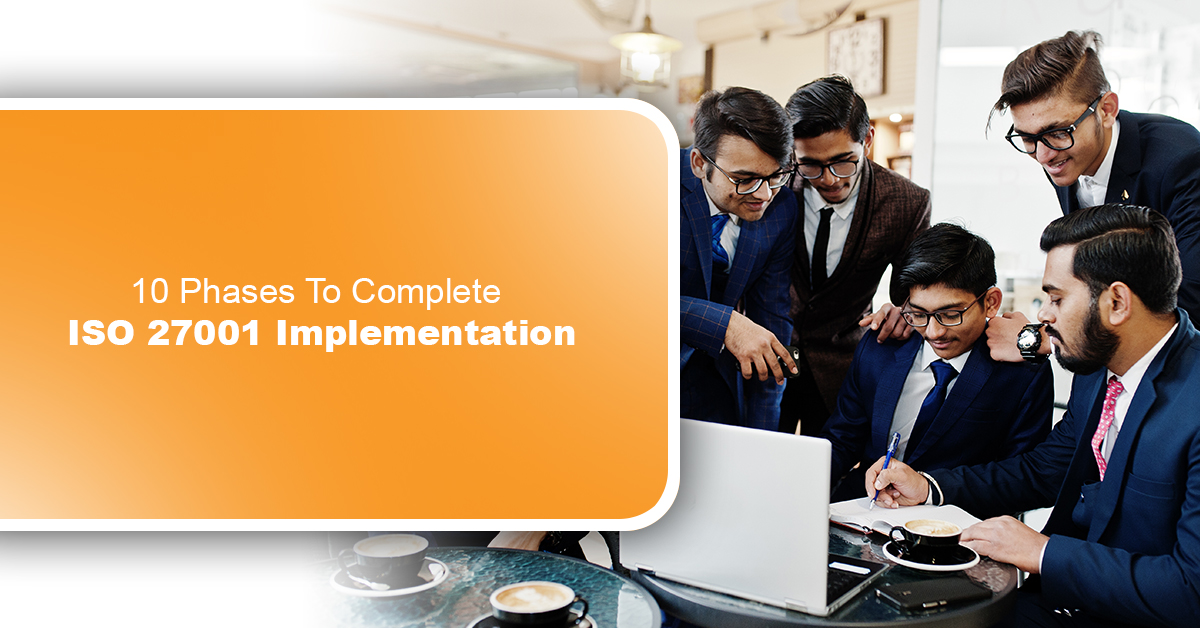
The indispensable importance of ISO 27001 is not unknown to companies that prioritise information safety and security. The certification holds the global standard for information safety management systems. The stringent program offered by ISO 27001 is capable of protecting companies from intellectual data hazards. In terms of information security, the ISO system helps organisations in safeguarding their financial data, records on employee performance, and documents on resource use. All these are subject to third-party manipulations. Besides, there is the potential chance of cyber attacks. To maintain the safety of your business potential along with your resources, make sure to have ISO 27001 implementation under professional guidance.
Without enough knowledge and guidance from industry specialists, completing all the phases of the implementation can be tiring and complicated. If you are unaware of the 10 phases of the implementation, then here is everything you need to know –
What are the key phases of ISO 27001 implementation?
Phase 1 – Settlement of business objectives
The first phase of the requirement is establishing business objectives. To identify the business objectives, a company can take an impression from its mission, vision, and strategic plans. The primary objectives can be –
• Customer assurance
• Stakeholder assurance
• Increasing marketing potential
• 100% compliance with the industry regulations
• Effectively conducting a risk assessment for intellectual assets
• Increase in profit margin
• Establishing effective protection measures for preserving brand reputation
Phase 2 – Management support
For a successful implementation, strong commitment and a sense of accountability are required from the management. The management personnel should be responsible enough for planning strategies, implementing the system, operating and monitoring the outcome, and finally making improvements according to the identified problems. The management team should streamline the following –
• Establishing objectives, policies, and plans
• Communicating all the plans to the employees
• Determining an acceptable level of risks
• Audit, monitor, and reviews
• Providing training from time to time
• Appointing the right people for accomplishing certain objectives
Phase 3 – Proper scope of Implementation
The scope of a proper implementation should be documented. While determining the scope of implementation, every company should –
• Select a scope that would support the fundamental business objectives
• Determine the complexity level of the process for compliance
• Review the scale of operations – number of employees, work locations, operational procedures, and customer services
• Checking whether the suppliers will adhere to the rules of the information security system or not
• Determining which areas or assets will be controlled by the system
• Identifying the regulatory and government rules and laws, which will affect the implementation
Phase 4 – Strategy for risk assessment
A correct course of action should be designed and applied for risk assessment. The assessment should be holistic including –
• Identify potential threats associated with intellectual properties
• Managing all the residual risks
• Categorising tolerable and intolerable risks
• To choose the right risk assessment method, your company can choose any of the following –
• Sarbanes-Oxley IT risk assessment
• Asset clarification document
Phase 5 -Preparation of an inventory of intellectual assets
There should always be a contingency plan for inventory. An inventory of information associated with the financial and human resource allocation should be devised. It will help to protect the intellectual assets according to the risk assessment done in the previous phase. To successfully prepare the inventory –
• The information assets should be identified according to their risk impact levels (high, medium, or low)
• After the risk identification, assign the correct amount of values to the risks
• After that, companies should identify the intolerable risks and assign control measures accordingly
Phase 6 – Risk management plan
Strict risk management and mitigation plan should be devised when the company has successfully prepared an information inventory and assessed the risks based on their occurrences. A thorough gap analysis followed by acceptable risk treatment, identification of operations controls, and proposal for implementing the control devices should be conducted.
Phase 7 – Risk control policies
Setting up the risk control policies and documenting them in a systematic manner is required in this phase. The management should take responsibility for documenting the policies.
Phase 8 – Resource allocation
The next phase is finding the right human resource and giving them the right amount of training after acquiring and allocating the proper resources.
Phase 9 – Monitoring the implementation
After achieving all the major phases mentioned above, it is time to closely monitor the implementation. Review and assess the implementation to check whether all the objectives are being met with compliance.
Phase 10 – Period Reassessment
A follow-up review should be done in the name of readiness review after a successful implementation to ensure that every requirement of the standard has been met. It is the final step before the accreditation.
All of these procedures might seem confusing and time-consuming if one lacks experience and knowledge. Therefore, contacting a professional expert for a systematic ISO 27001 implementation is necessary. From giving you advice on correctly attempting each phase to conducting audits and reassessment, the expert consultants will cover everything for you.

Get connected with us on social networks!